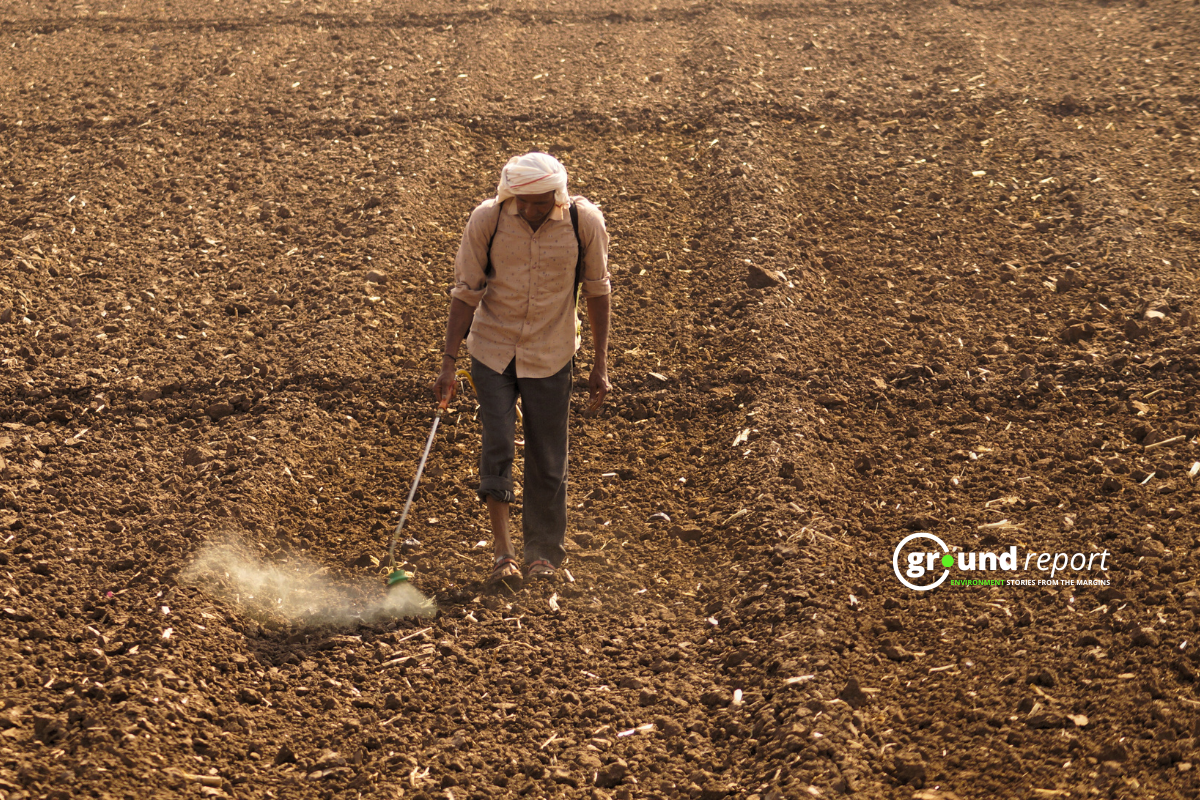Bamboo, tendu leaves, mahua, tori, fruits and berries, medicinal herbs, mushrooms, wood– everything Madia Gonds depend on for their sustenance comes from the forest. However, the forest is more than just a means of sustenance. Not just food, fodder and fuel, but even the gods, festivals, folklores, legends, and cultural symbols– all stem from forests and the being(s) that dwell in them. These micro-narratives– or stories or myths– weaved together with centuries-old knowledge systems dictate or inform their outlook of the universe and further shape their relationship with the forests and its resources.
The forest is sacred. The forest is culture. The way of life of Madia Gonds of the Surjagad Patti in the Gadchroli district of Maharashtra (re)affirms and amplifies this notion.
“We sell bamboo, mahua, tendu patta, tori (glue) and other fruits from the forests in the local markets in exchange for clothes and salt.” Sushila and Mangesh Norote, residents of Besewada village explained to me the gravity of the forest’s economic significance for their village. They said, “Every year around January, we collect bamboo and sell it to the contractors through the gram sabha. There are 50 homes in the villages, and each one manages to earn an average of Rs 30,000 through the sale.”
While we could not verify the claims of Sushila and Mangesh, although findings by Geetonjoy Sahu, a Professor at the Centre for Climate Change & Sustainability Studies, School of Habitat Studies, Tata Institute of Social Sciences (TISS), Mumbai, offer empirical evidence in support of the villagers’ claims. Sahu notes in the Economic and Political Weekly, that in the year 2017-18, 162 villages of Gadchiroli collectively earned a whopping 23.36 crore from the sale of kendu/tendu leaves alone.
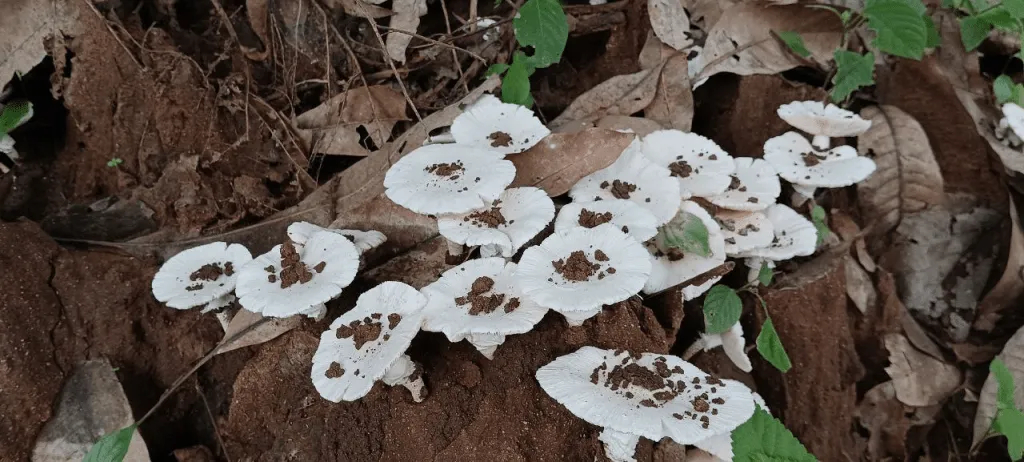
Additionally, several other forest produce such as nuts, berries, fruit, various kinds of mushrooms, roots, vegetable greens, and herbs are procured from these forests.
“We eat various animals like rabbits, mongooses, various bird species, fish, crabs, and ghorpad (monitor lizards). All of this comes from the Damkond hill. What will be left with if they tear up the hill for mining?” Sushila asks me.
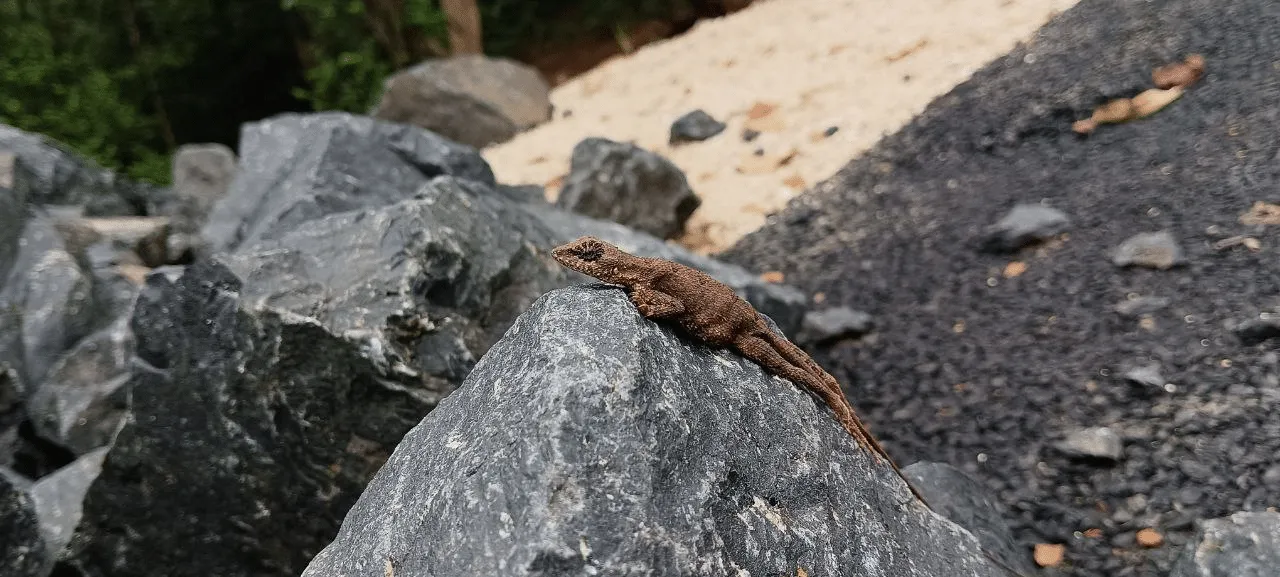
Sushila’s raging question is only a reflection of the Madia tribe’s decade-long fear and angst against iron-ore mining in their region– the Surjagad Patti in the Vidarbha region of Maharashtra. The recent expansion permitted to Lloyds Metals and Energy Private Limited (LMEL), spanning nearly 4,700 hectares has generated massive resistance from several villages. People from more than 70 villages have been protesting for more than 200 days. We have covered this issue and protests in our report titled: As land bleeds, the struggle for ‘Jal Jungle Jameen’ in Gadchiroli continues – GR.
Madia Gonds: Beliefs, and concept of anul/soul
“We coexist with the people of other worlds.” The locals believe that the hills are home to dead spirits of adipurush or animal-like humans from the past called khodk in Madia. The rivers and streams are the abode of the water-dwelling beings, called kaniyam. Kodhk and kaniyam must not be harmed. The tribals believe that cutting down the mountain would invite the wrath of the kodhk, and the rain will not fall on this land. Whereas, polluting the river would lead kaniyam to punish the villagers with fatal diseases. This would force them to abandon their homes and the villages.
“Baarish nahi hoga, bimari failegi, visthapit ho jayenge” (There will be no rain, the disease will spread, and people will be displaced)
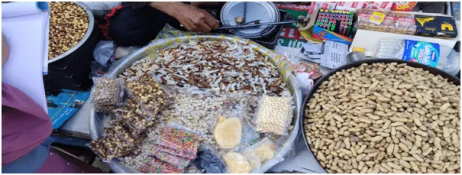
The legend of Devon ke dev (god of Gods) Ohdal, more famously known as Thakurdeo is integral to the tribe’s identity. The deity is believed to reside on the hilltop of Surjagad Hill, which is also the epicentre of mining in the region. Ranu Narote, a resident of the Jharewada village takes us to the makeshift shrine of Thakurdeo, situated at the base of the hill.
“A three-day jatra or annual procession is carried out every year in January. The procession is visited by no less than 15,000 Adivasis across Maharashtra and neighbouring Chhattisgarh”, Ranu says beaming with pride. However, pointing towards the hilltop, he laments “The actual shrine is on the top, on the other side of the Lloyd mines. Since the mining restarted, we can no longer access it except during the jatra.”
Similar stories echo from the forests of Bastar in Chhattisgarh and Raygada district in Odisha. The tribals of South Bastar in Chhattisgarh agitated against the mining operations in Nandraja Hill. They believe that the Adivasi goddess and wife to the Nandraja–Pithod Devi– resides on the hill. Even today, the Dongria Kondhs, a particularly vulnerable tribal group of Odisha, continue to protest against the mining operation in Niyamgiri Hill of Odisha- the sacred abode of Niyam Raja.
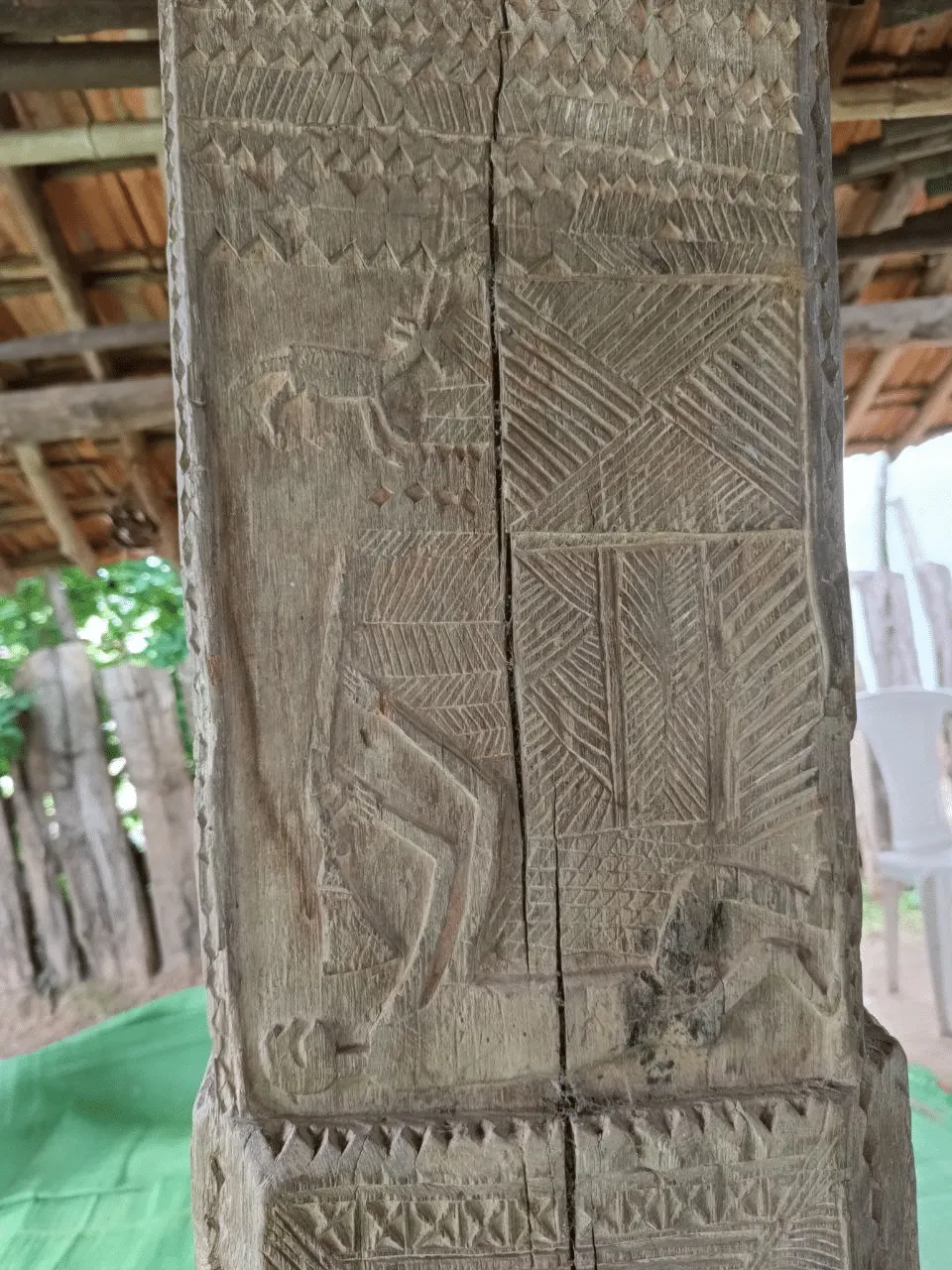
Madhav Gadgil of the Indian Institute of Science in Bangalore, who has studied sacred groves in Maharashtra for two decades observed in an article by Down To Earth,
“The guiding principle behind all these people’s forests is the supremacy and control of the community, not only over the forests and the environment, but also over the individual. The community designates a forest area as protected and to enforce the protection, declares it sacred, usually by dedicating it to a deity.”
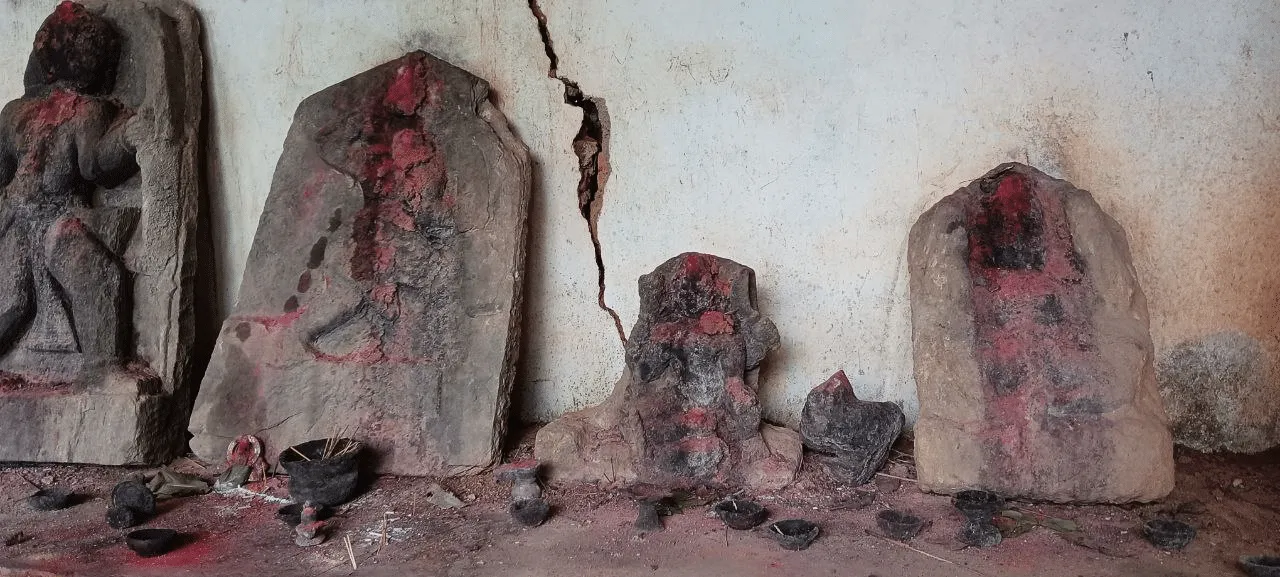
Gadgil bemoans that many of these sacred groves are on the verge of ruin. He identifies big power projects, and commercial forces with active support from the state machinery as the root cause behind the assault on sacred groves.
Death, life, and festivities
Ancestors command a very respectful place in the Madia belief system. Aadmi jab mar jaate hain, unko dev mante hain, uske yaad se tyohar manate hain. (When somebody dies, they’re believed to be god, and festivals are dedicated to them).
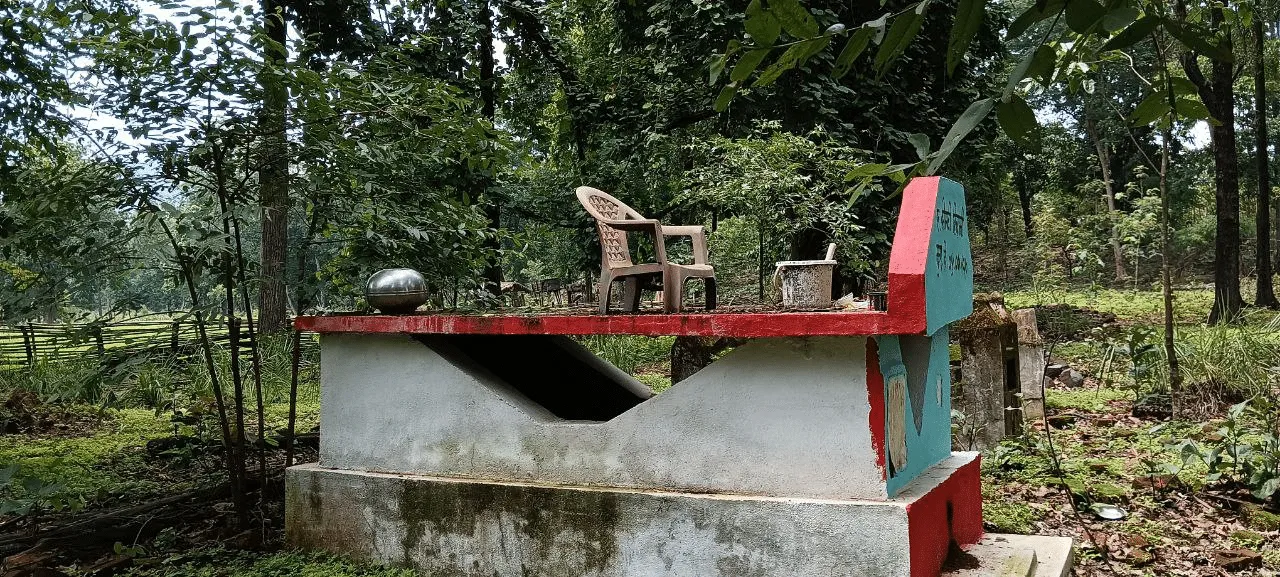
Utensils, cots, chairs, suitcases, clocks, and quite a few bottles of liquor (popular in the Adivasi communities), amongst several other things, mark the graves or ‘gumiyas’ on the outskirts of Madia villages. The souvenirs symbolise the close connection between the deceased and these items, during their lifetime- and serve as poignant reminders of the bygone individuals.
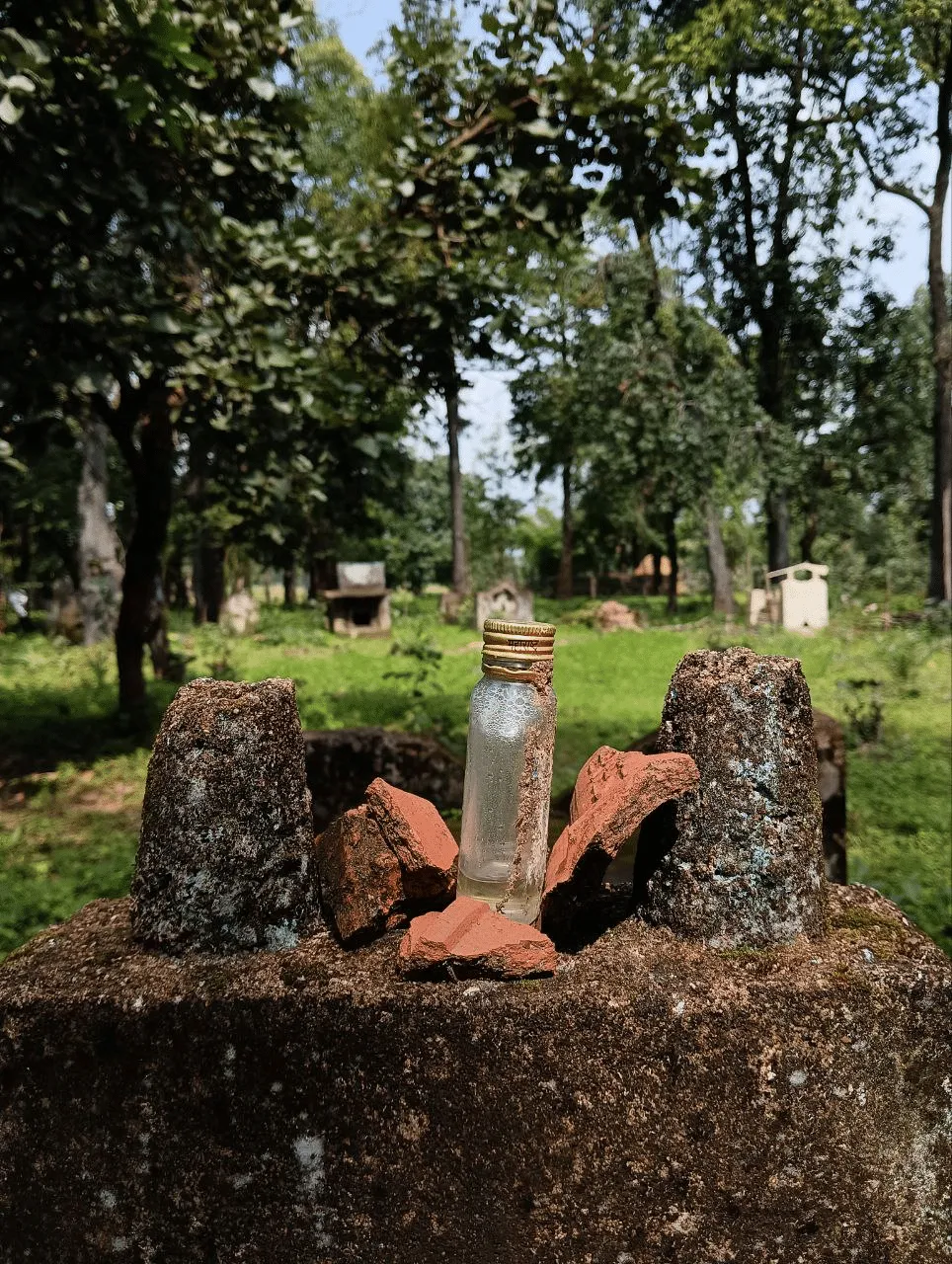
A more rudimentary form of these gumiyas– small pockets of stone structures- also lay strewn across the tribe’s customary boundaries. The smaller the stone, the tinier the human that lays underneath it. Interestingly, the remnants of their ancestors in the form of stone markings still dot the length of the hills and forests in the region.
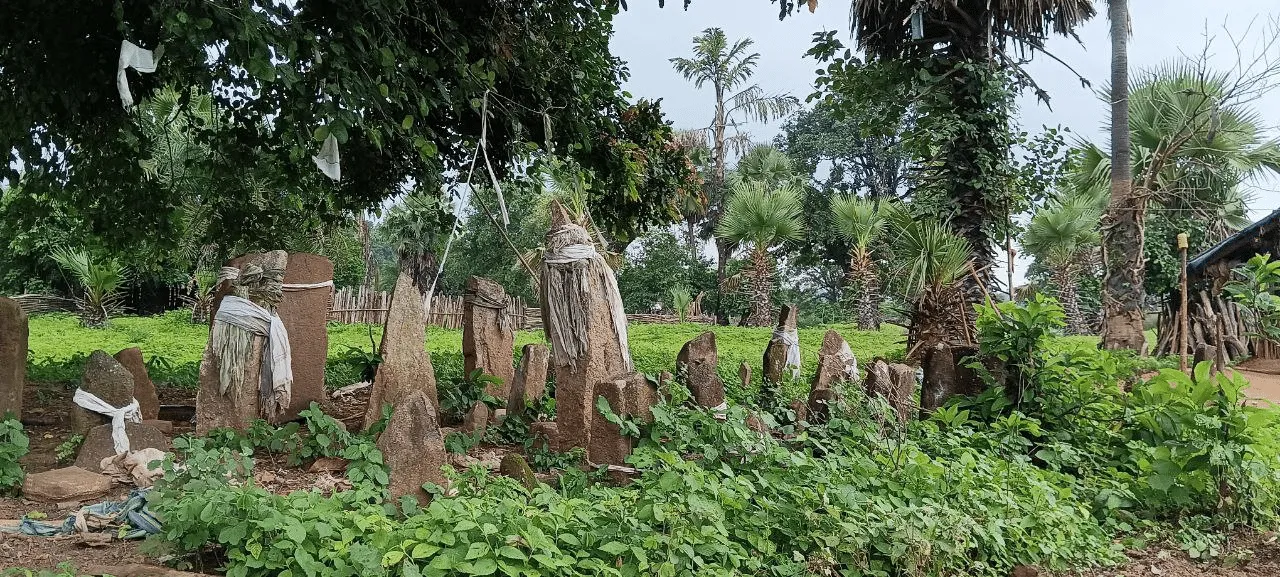
The Vijja Pandum (celebrating the advent of monsoon and sowing season) and Pindi Pandum (harvest festival) are two of the major festivals of the Madia Gonds. Not surprisingly, reverence for the forests and ancestors is at the core of the rituals performed during these festivals.

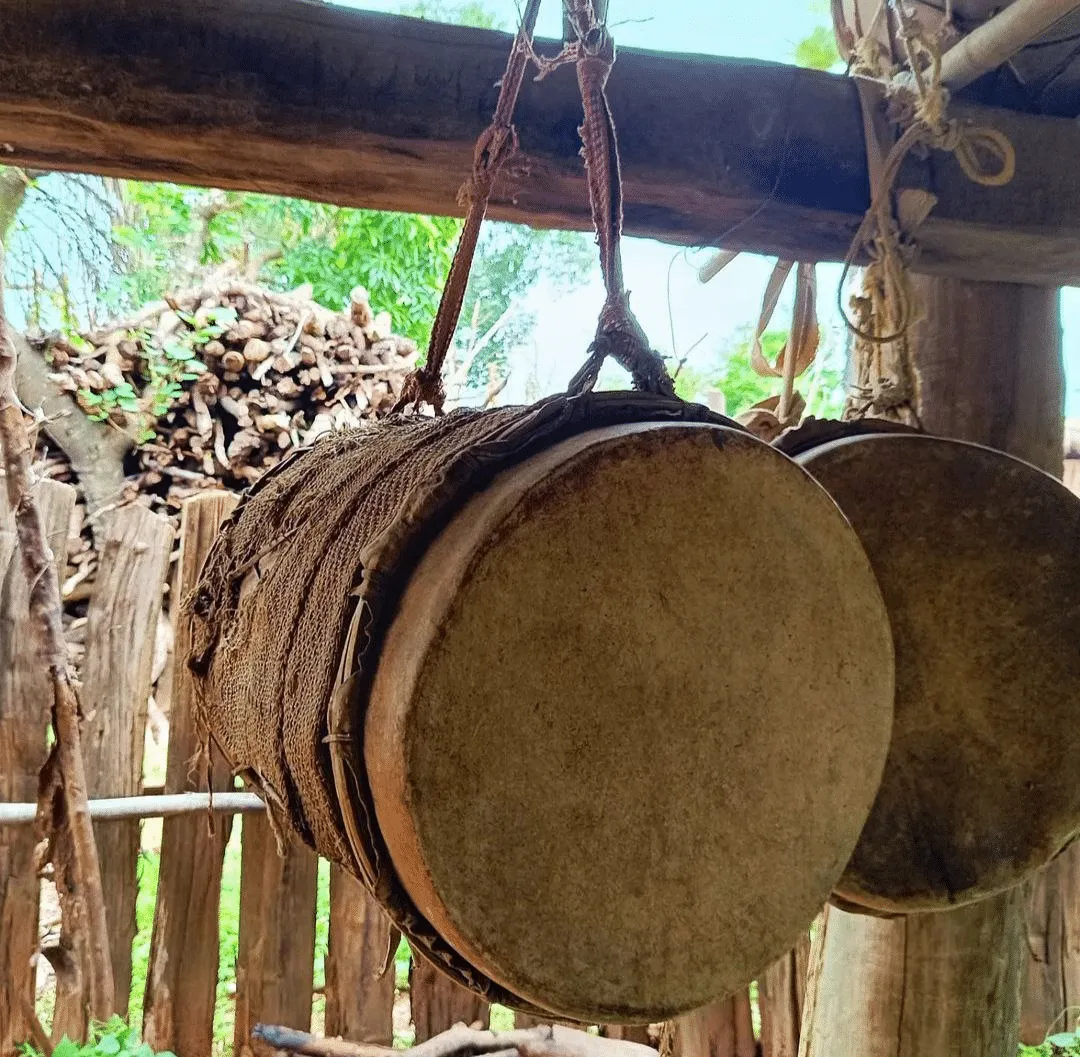
New development, and collapse of the old-knowledge system
A 2021 study probed the use of native plant species for the treatment of various ailments by the Madia Gonds of Maharashtra. The community uses at least 79 native plant species for the treatment of 34 ailments including dermal disorders, blood-related diseases, diabetes, edema and fever. But, when these communities get displaced from their habitats– from the source– what becomes of this knowledge?
“The knowledge system has been passed on for generations through an oral tradition which is rooted in their land and the forests alone. So when you displace tribes from their lands, it is the end of an epoch.” Swarup Dutta, an anthropologist and assistant professor at the TERI School of Advanced Studies explains to us that displacement of the tribes from their customary habitats has significant human costs. There is a definite loss of livelihood and shelter. At the same time, displacement leads to a flagrant uprooting of local knowledge systems which were developed over centuries as a response to the tribe’s interaction with various natural variables endemic to the place.
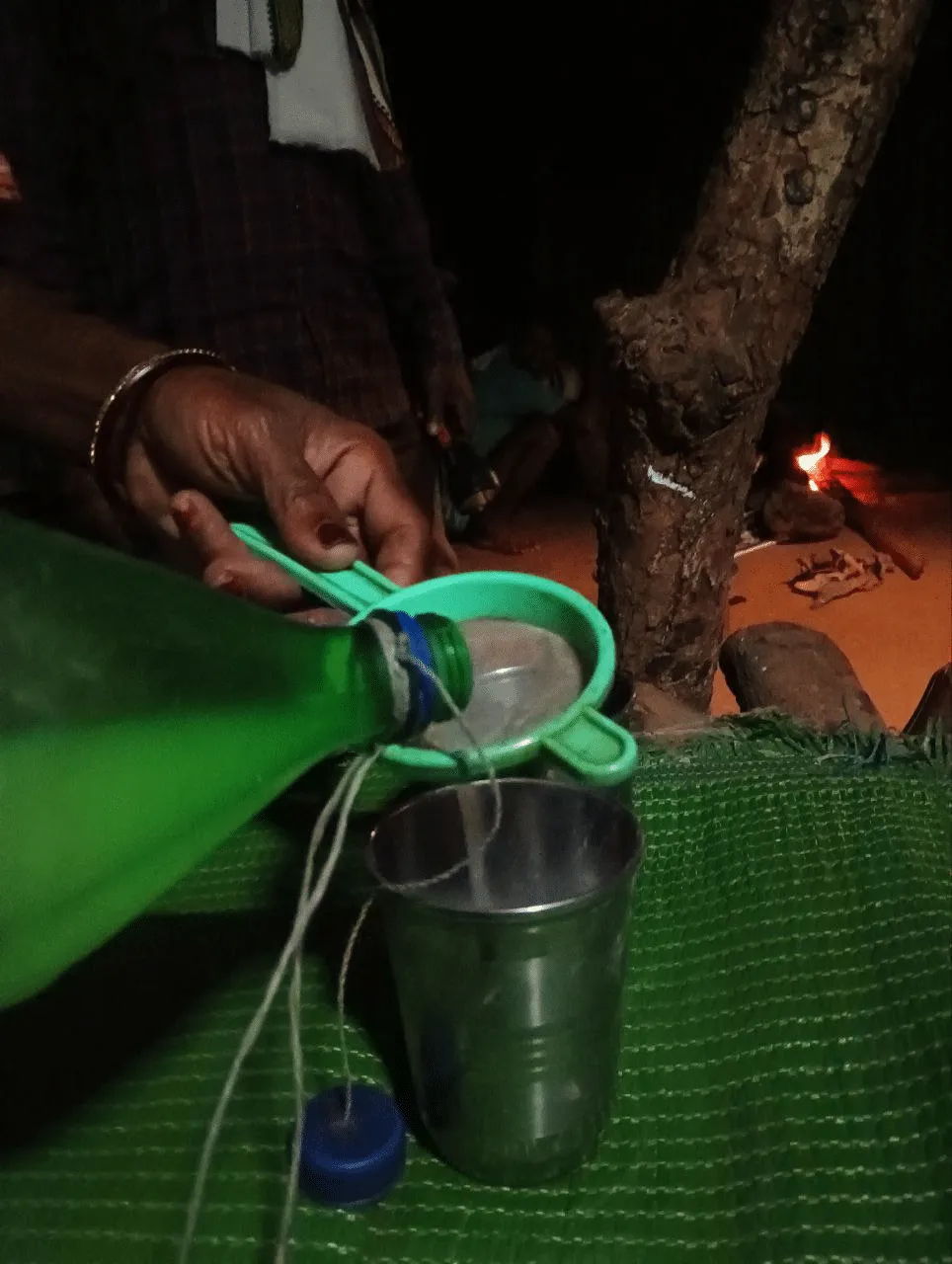
In the midst of increasing police camps, contamination from mining, and state repression, plastic- a seemingly innocent perpetrator has also managed to sneak into the Madia way of life. We watch the plastic waste burn in the chuhlas of Madia homes along with the firewood. The smoke remains in the huts. The smoke will keep the mosquitos at bay, they say.
How many more such forces exist? How do these impact the Advisasi way of life, every day? After a point, whom would they hold accountable? And, importantly, can we ever undo the damage?
Keep Reading
Indian agriculture household earns just Rs. 10,218 in a month: Govt
Post-harvest losses still high, reveals data shared in Lok Sabha
Khadi Haat village’s power-free wastewater treatment solution and more
Support us to keep independent environmental journalism alive in India.
Follow Ground Report on X, Instagram and Facebook for environmental and underreported stories from the margins. Give us feedback on our email id greport2018@gmail.com.
Don’t forget to Subscribe to our weekly newsletter, Join our community on WhatsApp, and Follow our YouTube Channel for video stories.




